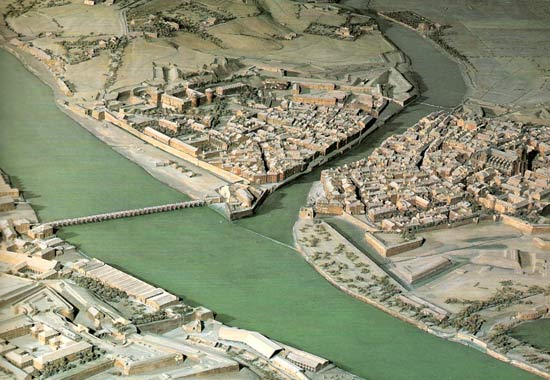French relief plans [1]
Since the time of King Louis XIV, the "sun king", the art of relief making developed considerably in France. Subjects were the fortified towns of France and of surrounding countries considered as enemies. These models were made for strategic purposes and thus strictly restricted.
In Paris, a school of relief makers emerged and veritable dynasties of relief makers established themselves [2]. For over a century, these models were the only representations which provided an almost accurate depiction of a landscape. Maps at that time were not fit to display terrain due to the lack of contour lines and other graphically convincing illustrations. In addition the models allowed depicting a landscape from a bird’s eye view long before humankind could fly. The king could use the models for understanding conquered territories without visiting them in person as travelling at that time was really arduous and time consuming.

The models normally cover the area of the towns and their surroundings dependant on the range of firearms in order to plan the defence or the siege of the towns. The scale was standardised to 1:600, so different models could be compared easily. Often the models were very large. The construction techniques were different from modeller to modeller at first, but towards the end of the 17th century a standardisation took place. The collection of these reliefs in Paris was both the most extensive and in terms of quality, the best in the World. To sustain their strategic value, the models were revised from time to time when required. Often, the models were made with regard to an ongoing or planned war, so the first period of reliefs in France was powered by the war between France and Spain in Flanders (today Belgium).
The first model based on contour lines was the relief of La Spezia (Italy), created on demand by Napoleon in 1811 with a scale of 1:1,000.
Today, these models, created between 1668 and 1870, provide invaluable information about the historic situation before industrialisation and the history of fortification.
